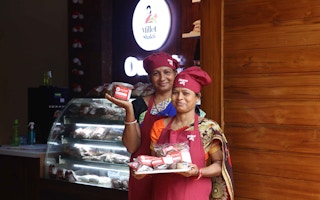As India prepares to host a three-day “Millet Mela” (millets fair) on the sidelines of an upcoming G20 Agriculture Working Group meeting to be held later this month, Indian farmers say they need a better support system to enable a shift away from conventional, resource-intensive wheat and paddy crops towards the more nutritious and climate-resilient millets.
To continue reading, subscribe to Eco‑Business.
There's something for everyone. We offer a range of subscription plans.
- Access our stories and receive our Insights Weekly newsletter with the free EB Member plan.
- Unlock unlimited access to our content and archive with EB Circle.
- Publish your content with EB Premium.
Millets are a group of small-seeded grasses whose produce is gluten-free and rich in nutrients, dietary fibre, protein, and antioxidants. They require relatively little water and are not affected by high temperatures, making them ideal for regions with hot and dry climates. In contrast, wheat and rice not only need intensive irrigation and fertiliser inputs, their grains shrivel at high temperatures – a rising concern due to global heating.
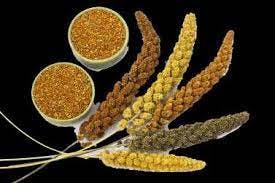
Dozens of millet varieties are grown around the world. These small-seeded grasses yield cereals or grains for human and animal food. Image: Ministry of Food and Agriculture, India.
“It seems to me that the Indian government wants to market millets as a superfood, just like how South America’s quinoa is being marketed and exported to the world,” says Dinish Balam, state coordinator, Odisha Millet Mission. “But for millets to become sustainable, it is important for it become part of the staples of rural and urban households across the country.”
Farmers growing millets also say a range of policy and regulatory issues must be addressed for this dream to be realised.
‘Nutri-cereals’
Millets were traditionally popular but lost favour after the Green Revolution popularised high-yielding varieties of rice and wheat. As a global frontrunner in the production of millets, India campaigned for the United Nations to declare 2023 as the “International Year of Millets” and has also provided US$ 500,000 to the Food & Agricultural Organisation (FAO) to support related activities to promote these “nutri cereals”.
India is a major producer and exporter of millets – it accounts for 80 per cent of Asia’s and 20 per cent of the world’s millet production, and is among the top five exporters of millets globally, having exported US$64.3 million worth of millets in the year 2021-22. Indian embassies are conducting activities to increase awareness about and demand for exports. In Indian cities, chefs in five-star hotels are creating millet-based recipes, food companies are promising to include millets in their product offerings, and plans are afoot to have mobile kiosks serving millet-based drinks. As India prepares to host its first-ever G20 summit, its Agriculture Working Group meeting, to be held from 28 to 29 March, will include a showcase of millets.
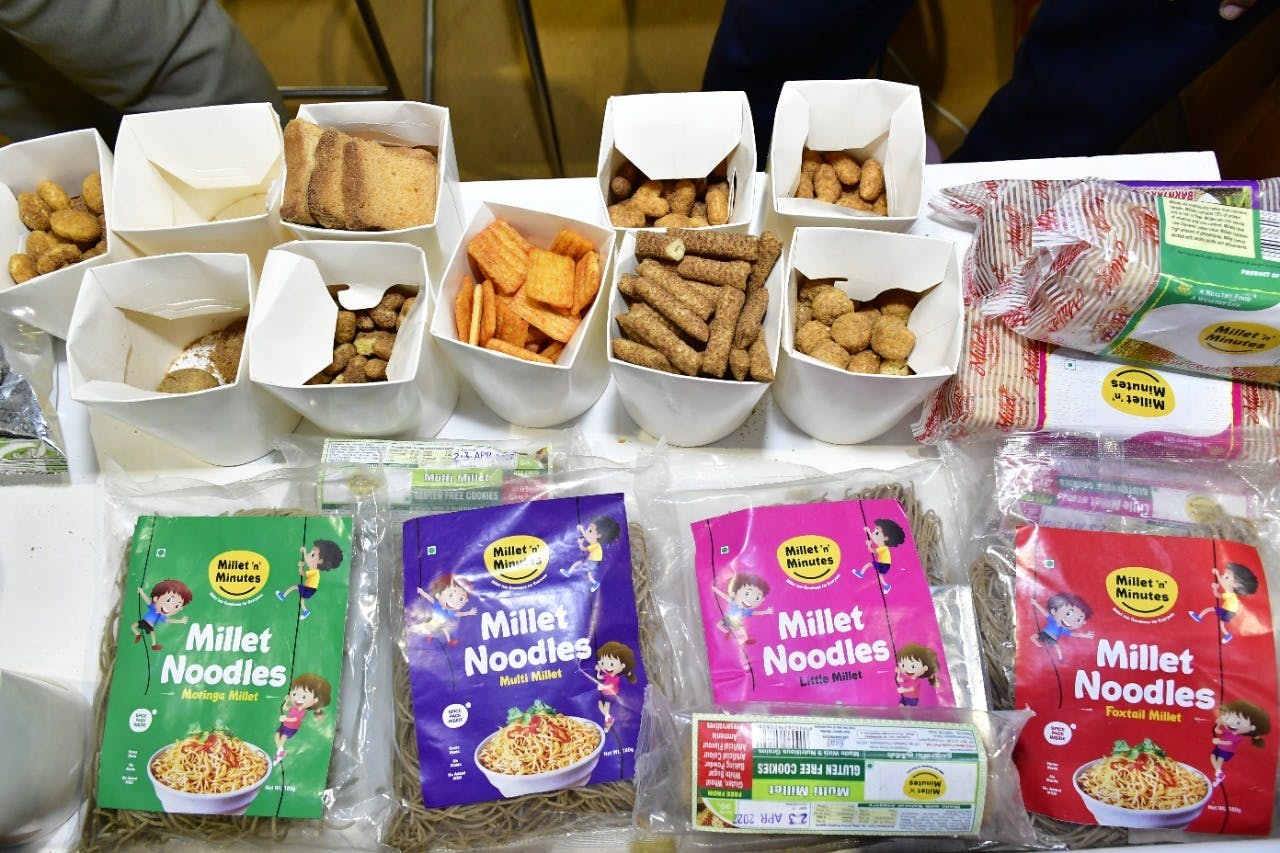
A variety of food products made from millets displayed at an international food and hospitality fair. Image: tweeted by Piyush Goyal, the federal Minister of Commerce and Industry, Consumer Affairs, Food and Public Distribution, and Textiles, on April 30, 2022.
Despite the buzz, however, the domestic policy ecosystem doesn’t yet present a long-term strategy for a transition away from wheat and rice to millets, essential to deal with the adverse fallouts of the Green Revolution, which made India self-sufficient in food production in the 1970s but had devastating ecological fallouts that farmers are still grappling with.
The current approach focusses on increasing the demand from urban areas and exports, hoping this will inspire farmers to expand supply.
“If meaningful actions are not taken to encourage farmers to grow millets, the year will just end with promotional activities hoping that the market will pick the tab. Both the farmers and private players have limited capacity,” says Rahul Sharma, an IT engineer-turned-organic farmer who is promoting the cultivation and consumption of millets in northern India.
The Indian government is among the largest buyers of its farm produce, and offers assured prices for a list of products that includes wheat and rice. Sharma says government procurement should favour millets, an assured “minimum support price” (MSP) must be offered to the farmers for the produce thus procured, and millets must be provided to the public at subsidised prices through the public distribution system that provides affordable food grains to the economically disadvantaged – just as is currently done for wheat and rice.
Together, government procurement, minimum support price and inclusion in the public distribution system can signal clear policy support and make it profitable for farmers to grow millets.
Why millets declined
Traditionally, millets were a staple almost all over India, with a range of foods and beverages made from these small grains. However, the area under millets declined in the 1960s when high-yielding varieties of rice and wheat were introduced and pushed through the public distribution system (PDS), which meant assured procurement and higher market prices for these two crops. The Green Revolution increased the irrigation cover to bring more area under wheat and rice cultivation, leaving millets restricted to rainfed areas. Urbanisation and higher spending power also favoured wheat and rice.
Between 1962 and 2010, India’s per capita consumption of millets fell drastically from 32.9 to 4.2 kilogrammes (kg), while that of wheat almost doubled from 27 to 52 kg. Despite high production and mass distribution of wheat and rice, however, malnutrition persists. India is home to 224.3 million undernourished people, according to a report released by the Food and Agriculture Organization in 2019-2021. Every second Indian woman is anaemic, every third child is malnourished, and every fifth child is wasted (low weight-to-height), shows data.
Compared to rice, millets pack in more nutrition (they contain 1 to 5 per cent protein and 5 to 49 per cent iron) and increase climate resilience (1 to 13 per cent fewer calories lost during an extreme dry year), found a 2019 study by the University of Delaware, Indian School of Business and Yale University. Millets also reduce greenhouse gas emissions by 2 to 13 per cent, demand for irrigation water by 3 to 21 per cent and energy by 2 to 12 per cent.
“
If meaningful actions are not taken to encourage farmers to grow millets, the year will just end with promotional activities hoping that the market will pick the tab.
Rahul Sharma, organic farmer in Northern India
Constraints and budget shortfall
The production of millets has indeed been increasing in recent years – from 12.49 million metric tonnes in 2020 to 15.92 million metric tonnes in 2021-22. But a lot of millets are cultivated as animal fodder. For instance, sorghum, one of the major millets, is grown on 2.6 million hectares across the country as animal fodder, while pearl millet is a popular bird feed. In fact, more than half the sorghum and pearl millet produced in India is finding its way to alternative uses like feed and alcohol.
“Many of the hybrid varieties of millets are cultivated to supply raw material for breweries. But the data on millets is also very limited as it only tracks pearl millet, sorghum and finger millet and does not take into account the minor millets [such as foxtail, proso and finger millets]. So, the actual area and production would be much higher than the recorded numbers,” says Ravindra, executive secretary of WASSAN, an organisation which works for ecological security of rainfed areas.
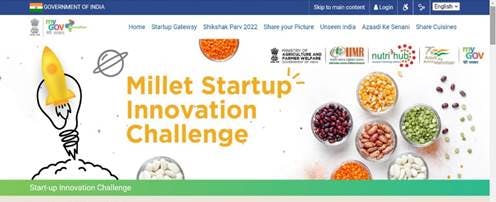
An example of the government push for innovation in the use of millets. The current approach focusses on increasing the demand from urban areas and for exports, but farmers say they need more comprehensive support to expand supply. Image: PIB.
While several government agencies and educational institutes are promoting the cultivation and consumption of millets, the annual federal budget for 2023-24 did not promise any special funding except making the Indian Institute of Millet Research a centre of excellence, which would translate into more funds for research and development.
The federal government has asked states to take initiatives to procure and distribute millets. A “sub-mission” on “nutri-cereals” under the National Food Security Mission provides incentives and training to farmers on crop production and protection technologies in 212 districts across 14 states. The costs incurred under the scheme are shared by the federal and state governments in a 60:40 ratio.
The first movers
The states of Odisha in eastern coastal India and Karnataka in south-western India have implemented systems to procure and distribute millets through fair price shops and mid-day meal schemes in schools, but the remaining states haven’t. Among the many varieties of millets grown in the country, pearl millet, sorghum and finger millet dominate the market and government policies.
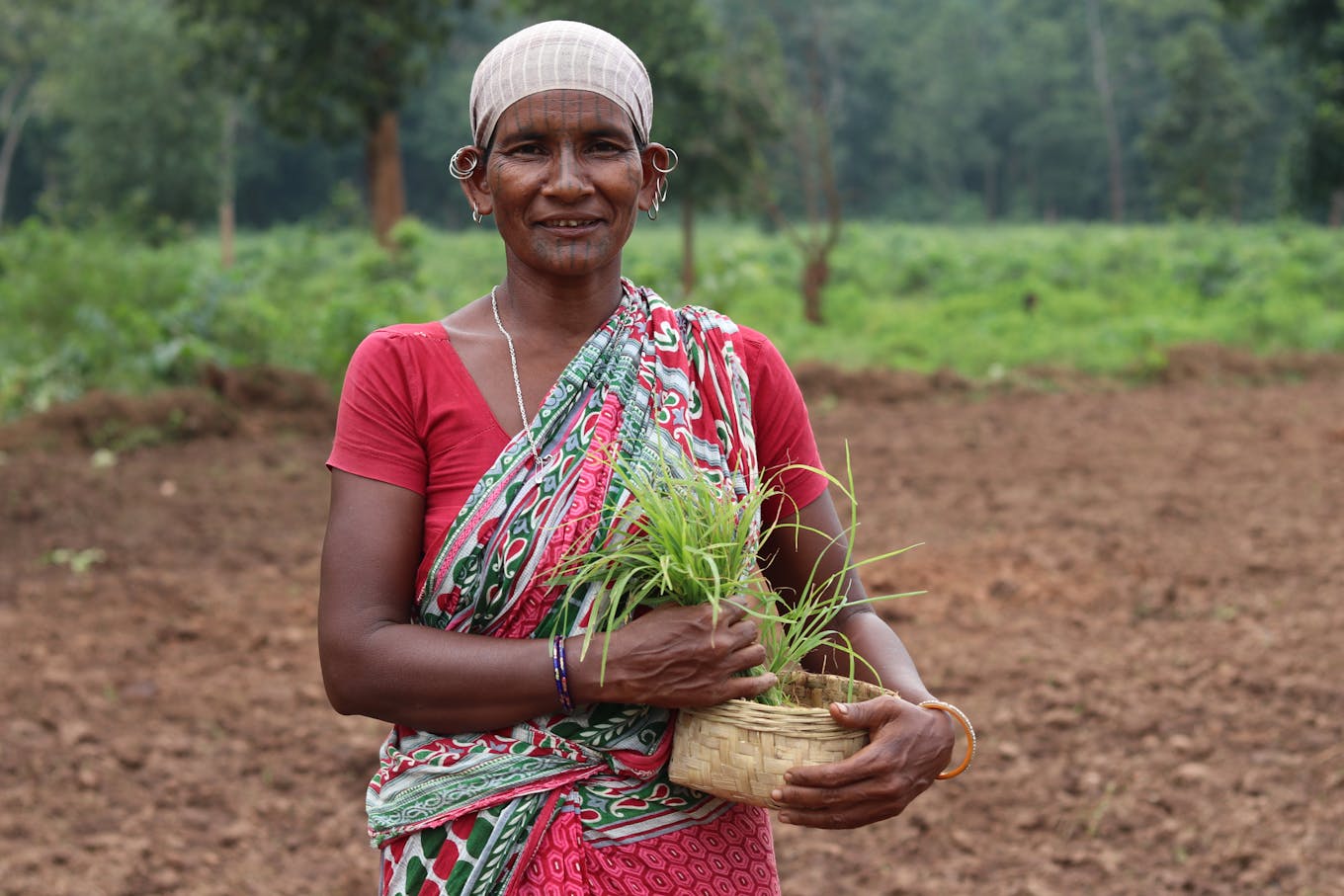
A millet farmer in Odisha state. Image: Odisha Millet Mission.
In 2021-22, the total procurement of millets was 0.63 million tonnes, half the 1.20 million tonnes procured in the previous year. Procurement by the state of Karnataka made up 80 per cent of this figure. The state also got the maximum allocation of 470,000 tonnes of finger millet and sorghum from the federal government for distribution through the public distribution system in 2022-23.
“With procurement, the area under finger millet has expanded in Karnataka but we need a long-term budget allocation. Also, attention has to be paid to minor millets otherwise there will be mono-cropping of just one or two millets which is not good for ecosystem and nutritional diversity,” says Krishna Prasad of Sahaja Smrudha, an organisation working to revive millets and make farming sustainable in Karnataka.
Karnataka became the first state to include millets in its public distribution system in 2015, while Odisha launched a millets mission in 2017-2018 focussing on better production, developing a millet value chain, campaigning for behaviour change, and increasing household consumption of millets. In a massive step up, the state has increased its spending on Odisha Millet Mission from Rs 580 crore (US$70 million) during 2015-2022 to Rs 3,200 crore for next five years (US$390 million).
“We have a decadal approach to millets. We know that wheat and rice took several decades to become main grains of the population, so we have to give as much time to millets,” says Balam, the Odisha state coordinator for its millet mission. “Our main objective is increasing household cultivation and consumption in order to tackle both malnutrition and a brewing farming crisis, by focusing on villages and small towns.”
Balam says that for five years, the mission has run awareness programmes to encourage behaviour change among consumers, while assuring procurement at government mandated prices to encourage farmers.
The mission’s success has resulted in a 215 per cent increase in the gross value of millets produced per farmer household, said a study by NITI Aayog, the apex policy think tank of the Indian government.
“The lesson all states need to learn from Odisha is that farmers won’t step into an uncertain environment. They need a support system just like for wheat and rice,” says Ravindra of WASSAN. “Simultaneously, millets have to be promoted as a staple rather than a packaged superfood affordable only to the affluent.”
Other states are taking baby steps too: this year, the central-eastern Jharkhand state announced an allocation of Rs 50 crore (US$6 million) for promotion of millets while Uttarakhand has promised to procure and distribute finger millet.
The urban-rural divide
In urban areas, the focus on lifestyle diseases has brought attention to millets. “We conducted several cookery workshops talking about millet-based recipes, which has led to uptick in consumption especially among those living with lifestyle diseases like diabetes and heart disorders,” says Raspinder Grewal of Kheti Virasat Mission, a group working towards sustainable farming and nutrition in the state of Punjab. “Though we have a network of around 100 local farmers cultivating millets, they only grow enough for self-consumption because the market linkages are missing. Most of the millet produce sold in Punjab comes from states in southern India.”
The trickle-down effect can also be seen in rural areas. “There is definitely a lot of buzz around millets now. One of the agricultural extension centres in our region took seeds from us last year for distribution among farmers. We are also getting calls from Delhi-based private players, but they offer a much lower rate than we demand,” says Sudha Nagavarapu, who works with Sangtin Kisan Mazdoor Sangathan, a grassroots organisation of small and marginal farmers and farm labourers that has been promoting millets for the last eight years in the Sitapur district of Uttar Pradesh in north-central India.
For sellers in smaller cities, it’s a mixed bag. “Our retail pick-up is still very low. The main outflow is through business-to-business deals and I don’t really see a major shift there,” says Rohit Jain of Banyan Roots, an organic products company that works with farmers in the north-western state of Rajasthan.
Another way forward could be support for farmer producer organisations (FPOs), which are farmers’ collectives aiming to provide members with end-to-end support in terms of technical, marketing, processing, and others inputs. “Big companies and city-based start-ups are dominating the supermarket shelves right now. We have to see how much of the market benefits reach farmers and how FPOs can be mentored,” says Prasad of Sahaja Smrudha in Karnataka.
Support is also required for processing millets, which is a tedious process and requires separate mills than for rice or wheat. Apart from pearl millet, finger millet, and sorghum, other millet types have tough seed coats and require de-husking. “These processing units also need to be set up at the community level because once de-husked, these millets become more prone to pests and diseases. So they can’t be stored for long and have to be consumed quickly,” says Ravindra.
Balam of Odisha Millet Mission adds that boosting millet exports will need R&D to meet importing countries’ specifications, including large-scale adoption of purpose-made processing machines. Odisha has again been the first mover in this field and has standardised some designs of harvesters, threshers and de-huskers.
To ensure widespread availability of these machines, Odisha has allocated Rs 1 crore (US$1,22,000) to each block (an administrative unit composed of a group of villages) for making provisions for processing millets, with the help of FPOs and women’s self-help groups.
“Investment in rural areas for local production, consumption and value addition is the key to make millets popular. We should aim for millets to replace 25 per cent of rice in popular diets,” says Ravindra.
Correction note: A previous quote by Dinesh Balam, state coordinator of Odisha Millet Mission stating that India has millets, just like how South America has quinoa, which can be marketed to the world as a superfood, has been edited as Balama was incorrectly quoted. Balam clarifies that he was speaking in the context of the Indian government’s stance, and that he is not in favour of the approach. (21 Mar 2023)

